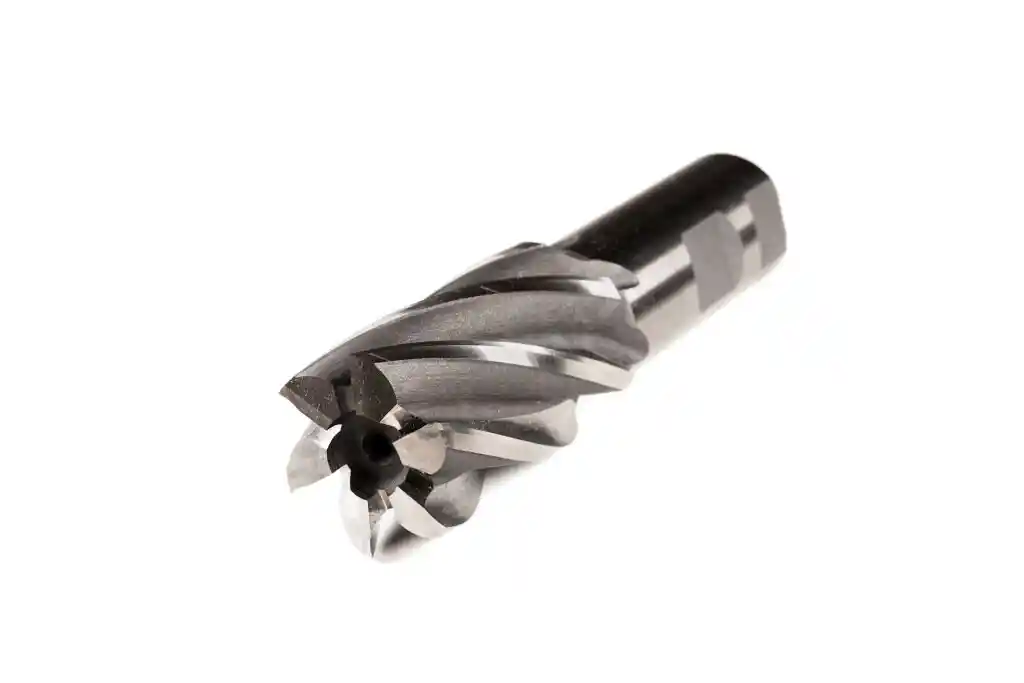End Milling 101: A Beginner’s Overview
Did you know that end milling is one of the most underrated yet crucial techniques in modern manufacturing? What exactly can it do, and why is it so essential in producing complex, precise parts? The answers might just surprise you.
From aerospace to automotive industries, end milling plays a pivotal role, with each type of end mill designed to tackle specific challenges across various applications.
Let’s dive in and uncover how end milling is transforming the world of manufacturing!
I.What is End Milling?
End milling is a type of milling process where the cutting tool’s rotation axis is perpendicular to the surface of the workpiece. It utilizes the cutting edges at the end of the tool to remove material and create flat surfaces, grooves, and other features.

II.What is an End Mill?
An end mill is a small, cylindrical cutting tool with edges on both the cylindrical surface and the end face. This versatile tool can be used to milling flat surfaces, create grooves, step surfaces, and more complex shapes. End mills allow for cutting in multiple directions, making them ideal for machining intricate and complex contours.
III.When to Use End Milling?
End milling is typically performed on a CNC milling machine or a machining center. The key advantage of end milling is its ability to cut in multiple directions, allowing for the creation of complex shapes, profiles, and grooves. It is widely used in mass production due to its high precision and ability to produce smooth surface finishes.
IV.Types of End Mills
There are several types of end mills, classified based on shape, number of flutes, and the materials they are made from. Here are some common types:
Shapes of End Mills:
-V-bit End Mills: These cutters have sharp V-shaped tips with angles of 60° or 90°. Ideal for small grooves and precision carving.
-Corner Rounding End Mills: With a curved tip, these mills are used for rounding sharp corners or creating fillets.
-Square End Mills: These are the most common and have flat, sharp edges that make them ideal for machining 90° angles and edges.
-Ball End Mills: Perfect for contoured surfaces, the ball-shaped cutting edge is used for smooth finish milling.
-Fishtail End Mills: With cutting edges concentrated at one end, fishtail end mills are great for cutting dovetail slots and keyways.
Number of Flutes:
The number of flutes (spiral grooves) on an end mill affects its cutting performance and chip removal capacity. Here’s how they differ:
-2 Flute End Mills: Best for softer materials, with more space between flutes for efficient chip removal.
-3 Flute End Mills: Known for their good chip removal capabilities and versatility in machining.
-4 Flute End Mills: Ideal for cutting harder materials, offering increased stability but slightly lower chip removal rates.
Materials Used for End Mills:
End mills are commonly made from High-Speed Steel (HSS), Cobalt, or Carbide, each offering different properties:
-HSS End Mills: Economical and ideal for low-speed operations, though they wear out faster.
-Cobalt End Mills: More durable than HSS, they perform well at higher speeds but are more expensive.
-Carbide End Mills: Extremely durable and heat-resistant, carbide end mills are perfect for high-performance applications but come at a higher price.
V.Applications of End Milling
End milling is used in a wide range of manufacturing applications, including:
• Aerospace: Creating complex components like turbine blades and aircraft structures.
• Automotive Manufacturing: Machining engine components, chassis, and transmission parts.
• Mold Making: Shaping molds for various industrial products.
• Mechanical Manufacturing: Precision machining of metal parts used in industrial machinery.
VI.Benefits of End Milling Operations
End milling offers numerous benefits, making it a staple in modern manufacturing:
• Versatility: Capable of processing flat surfaces, contours, and grooves.
• Precision and Accuracy: CNC-controlled end milling offers high precision, ensuring a smooth surface finish.
• Wide Material Range: Works well with metal, plastic, wood, and composite materials.
• Complex Product Design: Excellent for making intricate shapes like molds or casings.
• Energy Efficiency: Reduces tool change frequency and lowers energy consumption in multi-task machining.
VII.How to Use End Mills
Using an end mill efficiently requires careful setup and operation. Here are the steps:
• Check the Cutting Tool: Ensure the tool is not damaged and is suitable for the job.
• Secure the Workpiece: Properly secure the workpiece to avoid movement during milling.
• Set Cutting Parameters: Adjust cutting speed, feed rate, and depth of cut based on material and desired outcome. Incorrect settings can reduce tool life and accuracy.
• Clean Up Chips: After each pass, remove chips to prevent them from interfering with the tool’s performance.
• Lubricate the Tool: Use cutting fluids to reduce friction, prevent overheating, and extend tool life.
Conclusion
End milling is a versatile and precise machining method used for a variety of applications, from aerospace to automotive to mold making. Whether you're using CNC technology or conventional milling machines, understanding the types of end mills, the best practices for usage, and their applications can significantly improve the quality and efficiency of your machining operations.
FAQs
What Is the Difference Between End Milling and Face Milling?
End milling can perform a broader range of operations, including milling on both the end surface and the side of the workpiece. In contrast, face milling typically works only on flat surfaces.
What Are the Disadvantages of End Milling?
End milling operations can be complex to set up and require accurate parameter adjustments. Improper setup can result in poor surface quality or machine damage. Additionally, end mills tend to wear out quickly when cutting hard materials.




 Email
Email sales1: +86 13295238763
sales1: +86 13295238763

